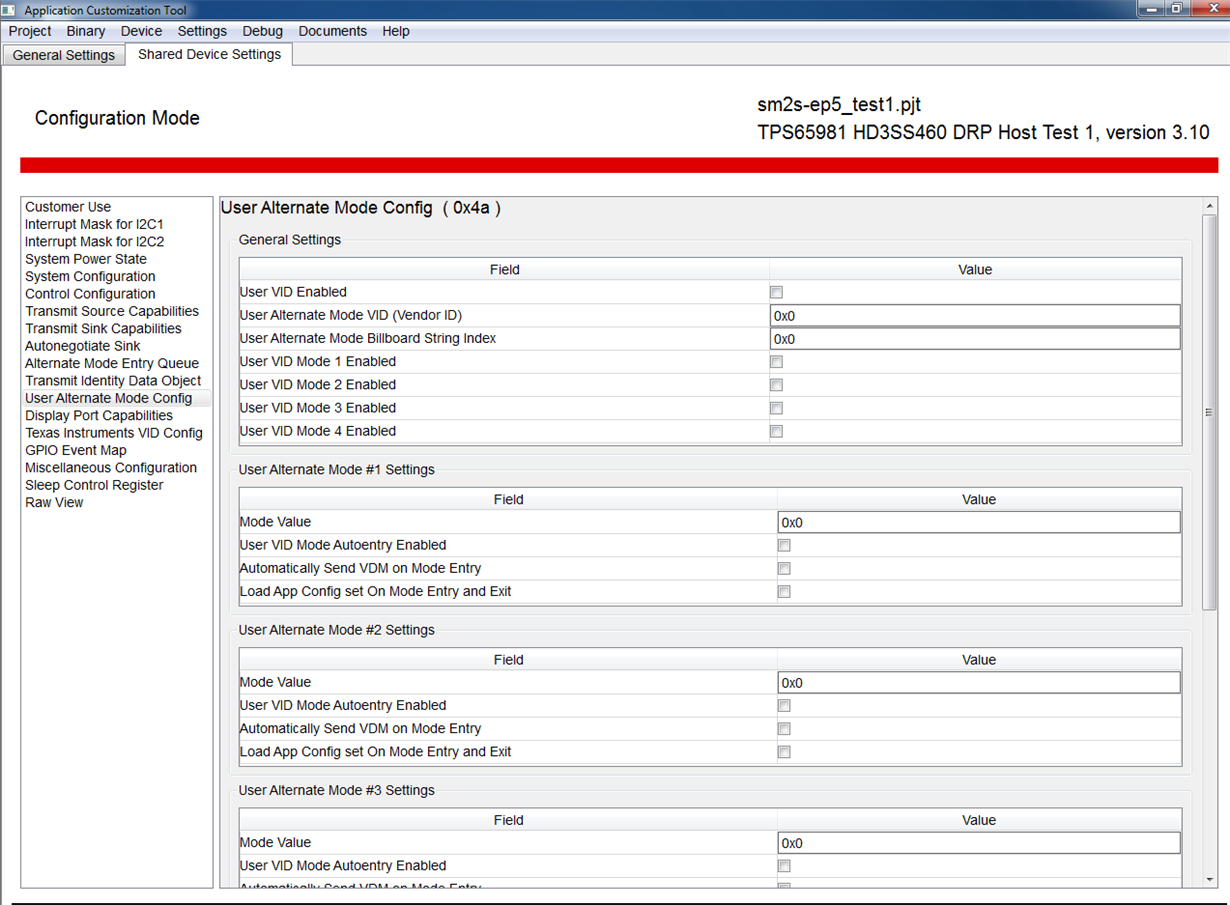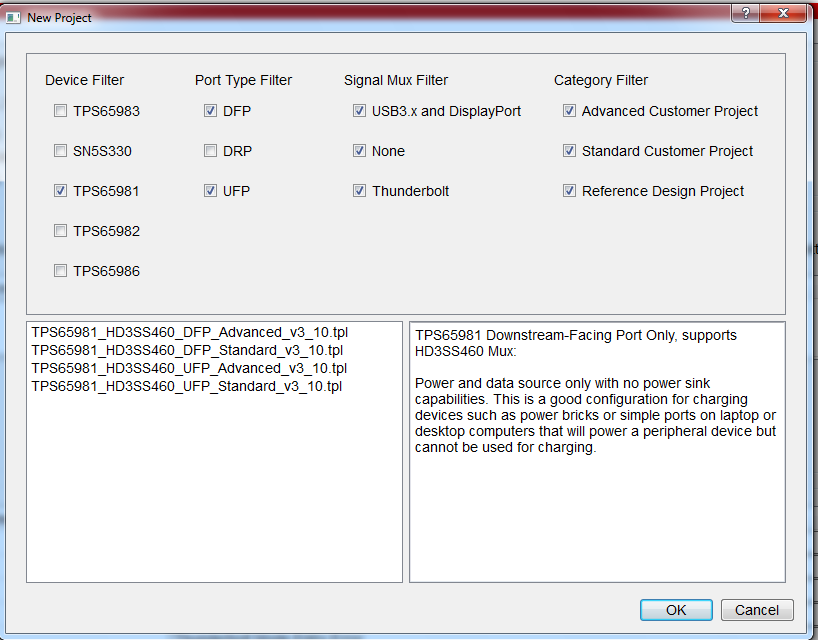Other Parts Discussed in Thread: HD3SS460, , TUSB1064, TUSB564
my customer uses TPS65981 and tried the implement a modulated firmware.
Right now, only a small subset of USB-C with USB2 and Power is existing. The identification of DisplayPort and super speed doesn’t work yet.
They wish to implement the following requirements:
- · Supply of 5V/3A
- · USB2
- · USB3 and Displayport, either unmixed or superspeed with 2-lane Displayport mixed
- · Clientmode with Superspeed
- · Support of Overcurrent at GPIO6
- · Support of Hotplug Detect at GPIO4
- · Support of VBUS_DETECT at GPIO7
- · Support of OTG Host Detect for Superspeed atGPIO2
Is there already material that I can provide existing?
Would a call with the customer directly make sense?



